Is there any meaningful difference between a cult and a culture?
After studying the two concepts for months I’ve come to the conclusion that the only difference is social perception (subjective opinion).
Meaning from a more objective standpoint, there’s no real distinguishing factors between the two concepts.
I’d summarize both cults and cultures as a programmable way of life; a sort of mental operating system for subscribers of that particular culture.
Consider the religion of Christianity.
Most would agree that Christianity, like all religions, is a culture of its own.
Christians have their own customs, traditions, gathering places, terminology, leaders, history, etc.
But why isn’t Christianity considered a cult?
Purely because of its scale.
In its early days, the religion would have most certainly been considered a cult (if there was an equivalent word in the first century).
In their lessons on Christianity, Khanacademy echoes the same sentiment, writing, “originally, Christianity was a small, unorganized sect that promised personal salvation after death.”
Sounds pretty cult-like right?
The cult was so successful in gaining followers that it transcended society’s vaguely defined perception of being a cult and became a culture in and of itself.
There are countless more examples that lead to that same conclusion.
Therefore, moving forward I’ll be using the word culture instead of drawing any distinction from a cult.
The people who subscribe to either typically fall on a spectrum between blindly following the ideas, principles, and practices that those before them have laid out as their way of life or regularly challenging the status quo of their predecessors.
Most lean closer to blind following.
For better or worse, this means that culture can be both a weapon and a tool; depending on the designer.
The purpose of this framework is to reverse engineer the elements that make up a culture and use them to craft a culture of our own making around our personal brand, movement, or business.
✳️ Businesses that consciously architect a culture around their offers experience
- Laser-targeted marketing & messaging
- A direct line to customer’s emotions
- Free word of mouth marketing
- Greater customer loyalty
- Longer legacies
After dissecting cults and cultures spanning across human history I’ve condensed what I uncovered into the 7 part Cult Operating System.
If you want to turn your brand or business into more than just a corporate entity, this is your blueprint.
We'll start at the center of the framework and work our way outwards, analyzing each key element.
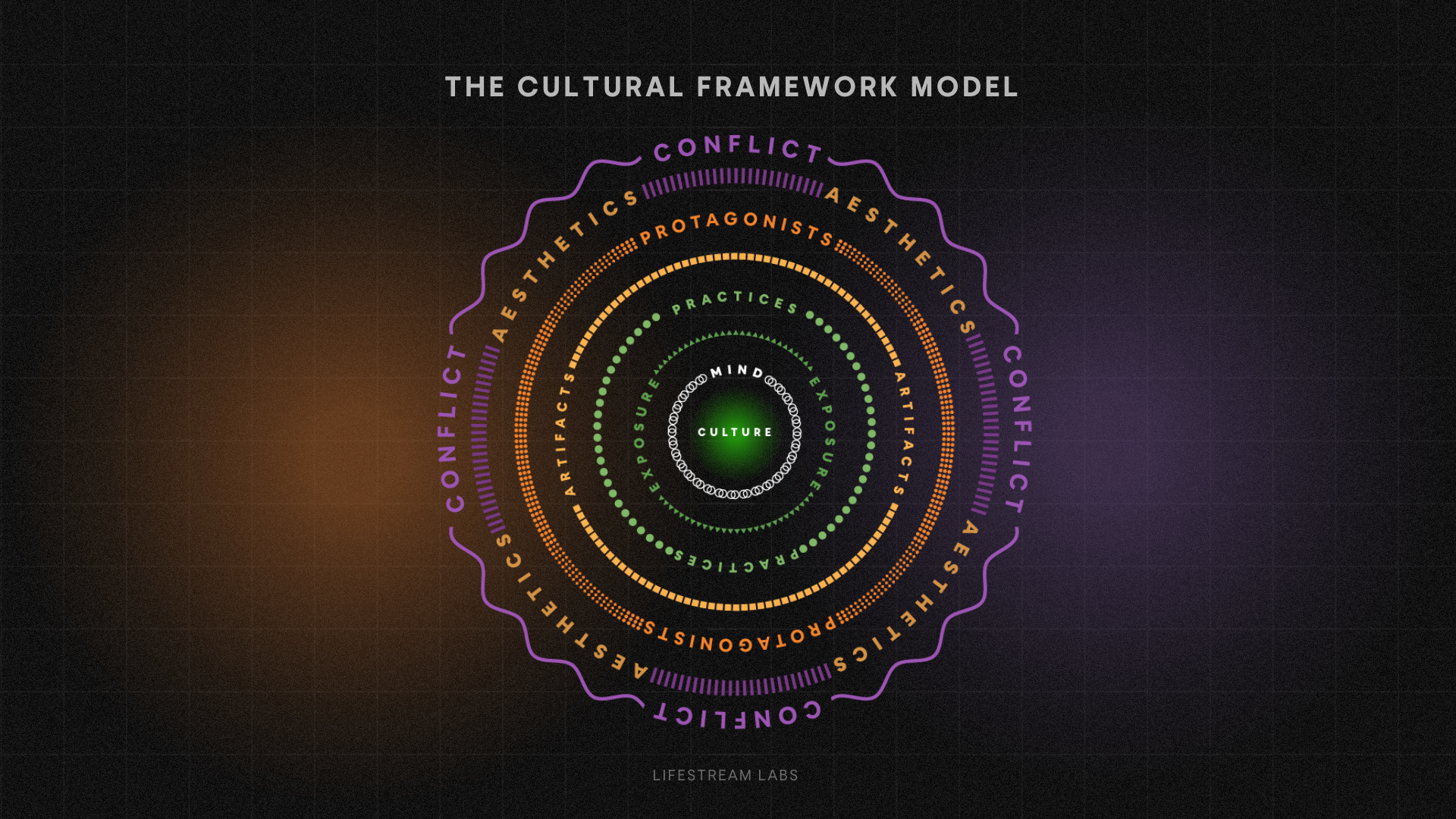
Mind
The Mind element consists of the overarching ideas, attitudes and beliefs a culture has about themselves, life, and the world.
If we’re to consider American culture, for example, we’ll find themes of consumerism and individualism permeating throughout.
From a business angle we might consider Nike’s attitudes of self-confidence and empowerment (very prominent in their advertising).
Application
To implement this element of a culture within your own brand or business, you must consciously articulate the core belief systems and attitudes your people will embrace.
I’m doing this myself in creating my Code of Conduct.
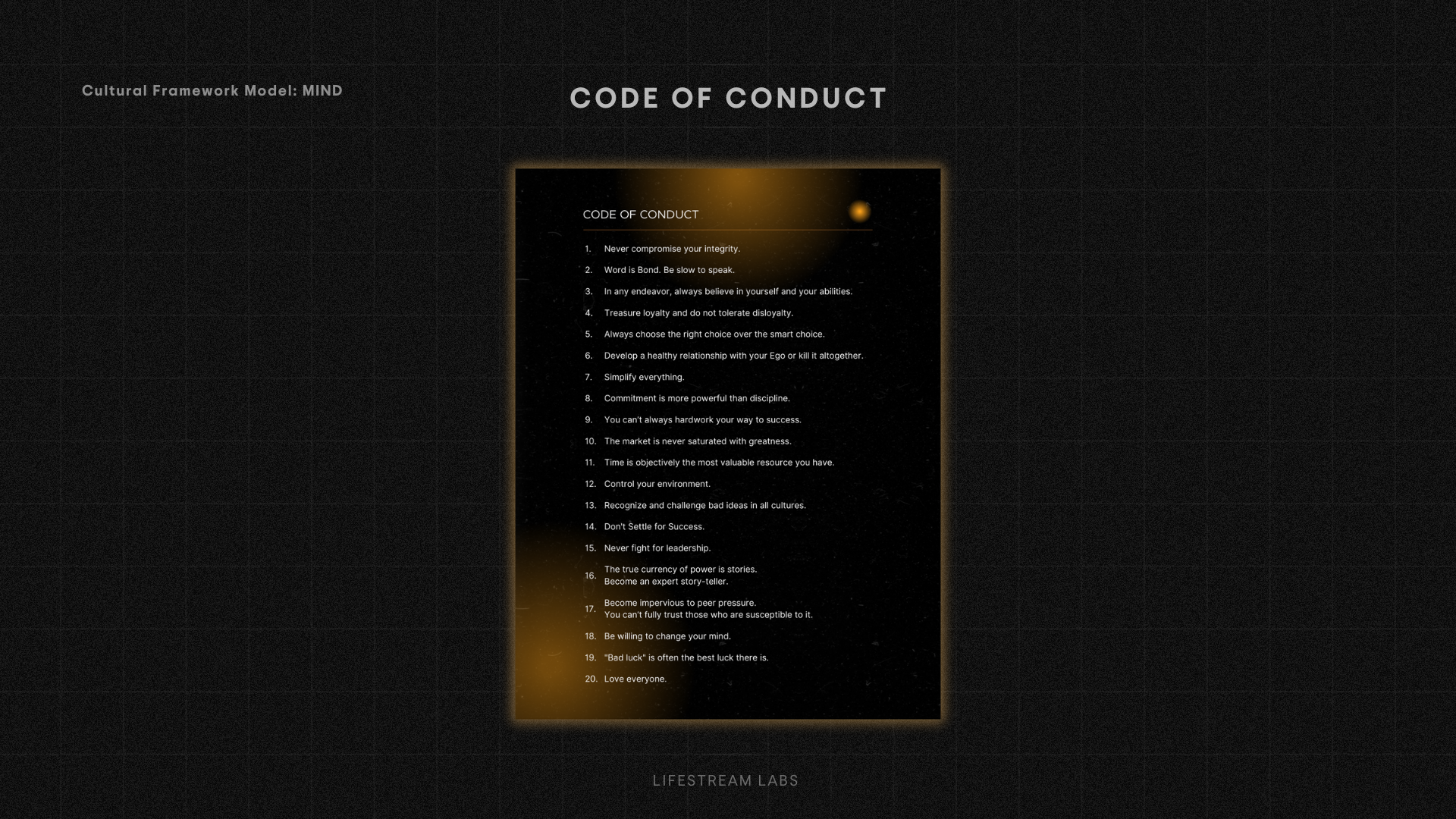
Exposure
It’s one thing to define the Mind, but now you’ll need a way to disseminate and reinforce those ideas within it.
Exposure is simply the media & education a culture is regularly exposed to.
- TV
- Music
- Literature
- Social Media
- Research + Studies
- Cultural origin stories
Consider how the Tik Tok algorithm infamously differs between China and the United States.
China’s algorithm prioritizes science & technology content.
The US algorithm prioritizes entertainment and humor.
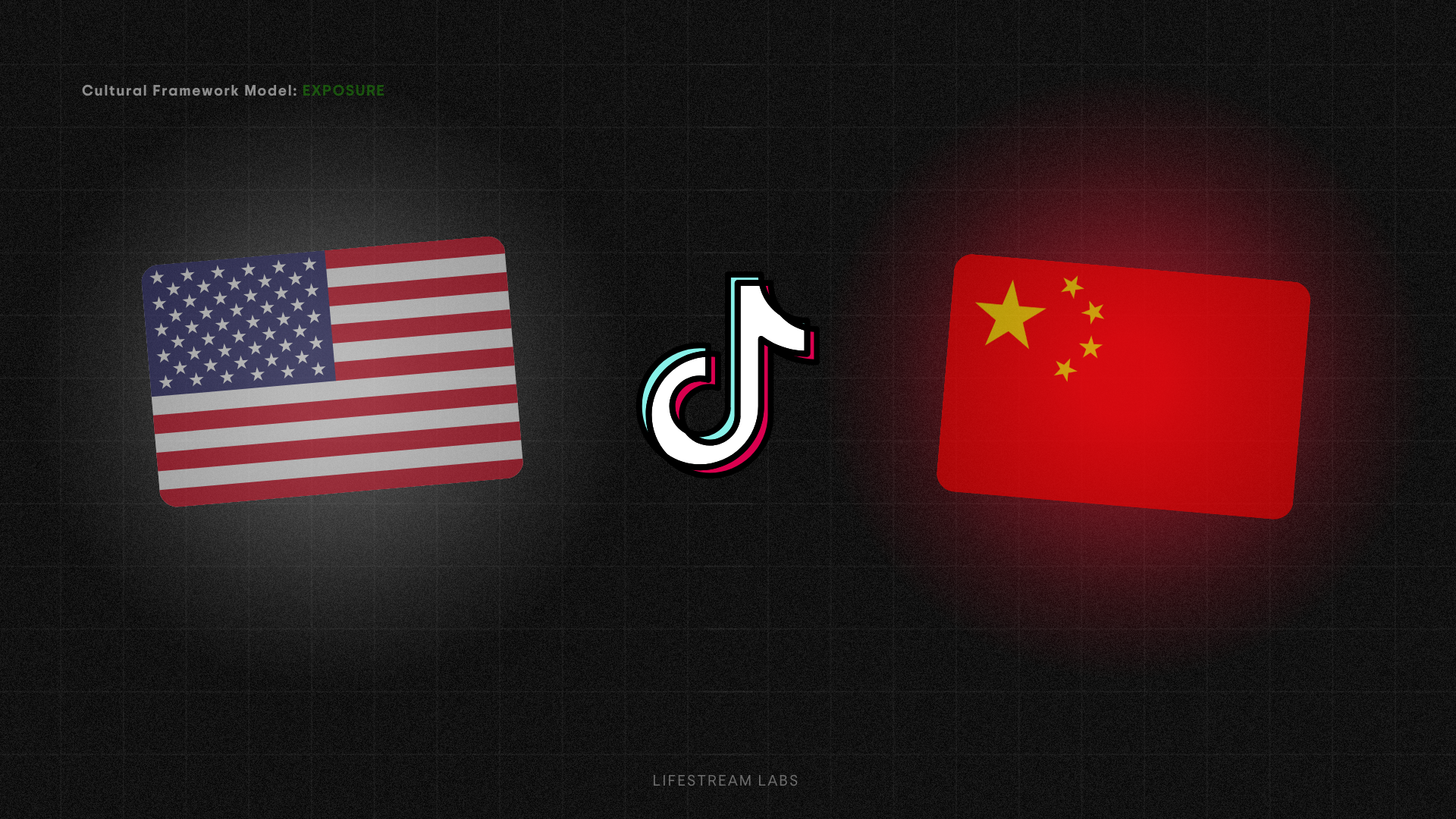
This is how Exposure can be used to “push updates” to a culture’s mental operating system.
Application
You’ll need to be a producer or curator of this media.
The Exposure will be how you program the minds of those who choose to subscribe to the culture you’re building.
I’m doing this by producing this newsletter through my R&D firm, Lifestream Labs.
Practices
The Practices element of a culture is made up of the rituals, customs, traditions, and places that a culture engages in.
Similar to Exposure, these practices both reveal and reinforce the Mind.
Practices may include
- Language & sayings
- Social gatherings
- Work-life balance
- Gathering places
- Dances
- Fitness
- Habits
In Christian culture, some of the most obvious practices include prayer and church.
From a business perspective, Chick-fil-A offers a great example in their famous response to thank you’s.
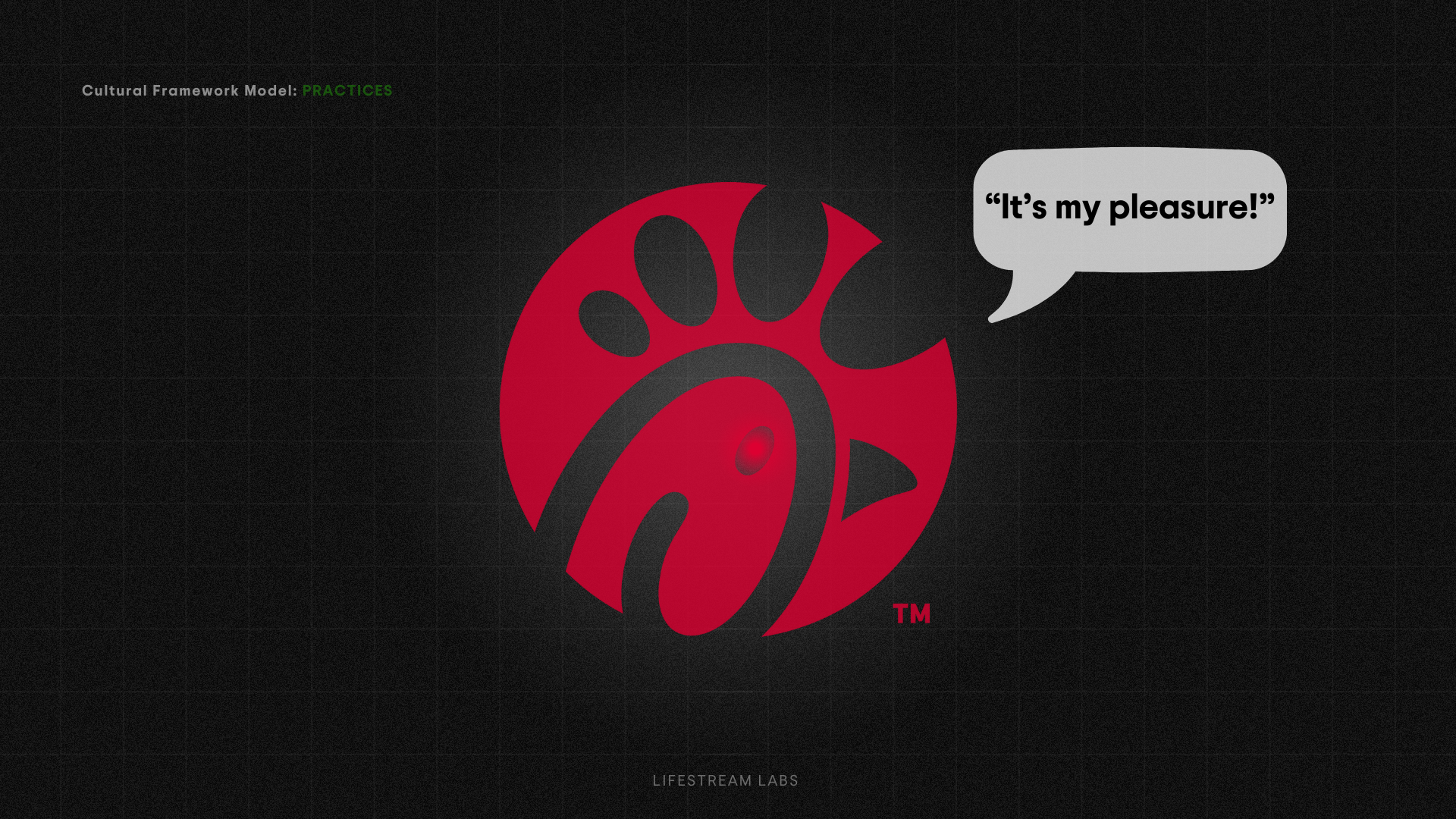
Application
As you think through this element for your brand or business, consider how you might reinforce the Mind through the things you say and do.
Do you have certain terms or phrases your culture will adopt?
Do you regularly go to certain places?
Artifacts
Offering the most promise for monetization, next up is the Artifacts element of culture.
Artifacts are the physical or digital items or symbols that members of a culture use to signal their association to a culture.
This idea is perfectly captured by the popular “Starter Pack” memes that highlight the common possessions that signify someone is part of a particular culture or subculture.
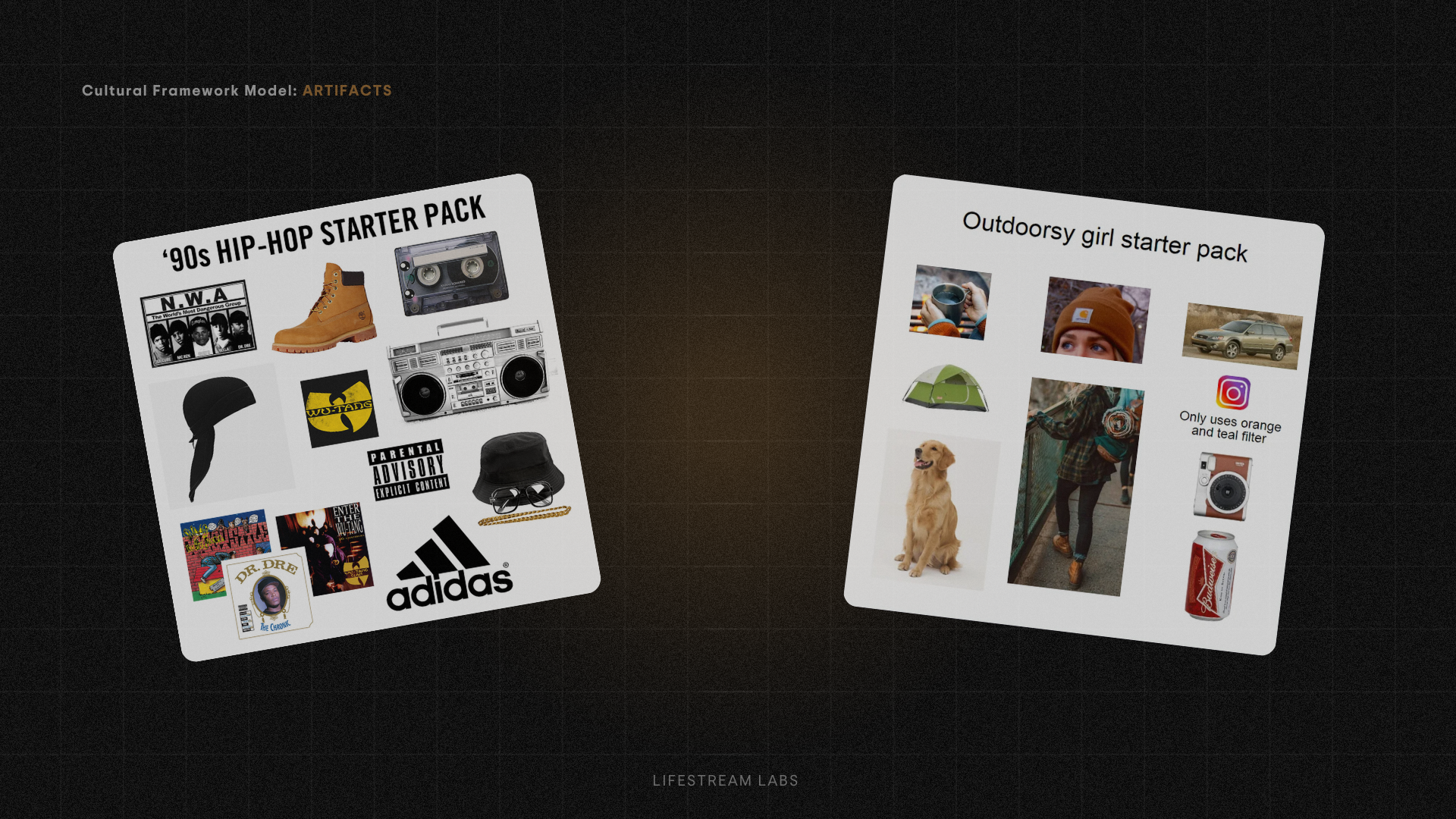
Under my framework, Artifacts may include:
- Physical goods
- Digital goods
- Food & drink
- Logos
- Flags
The examples for this element are nearly unlimited.
During hip hop’s inception (and still today in many ways) some of the key Artifacts used to signal involvement in the culture were gold chains, grills, cars, and certain clothing brands.
In the world of brand & business, a prime example would be global thought leader 19Keys and his iconic “Crownz”.
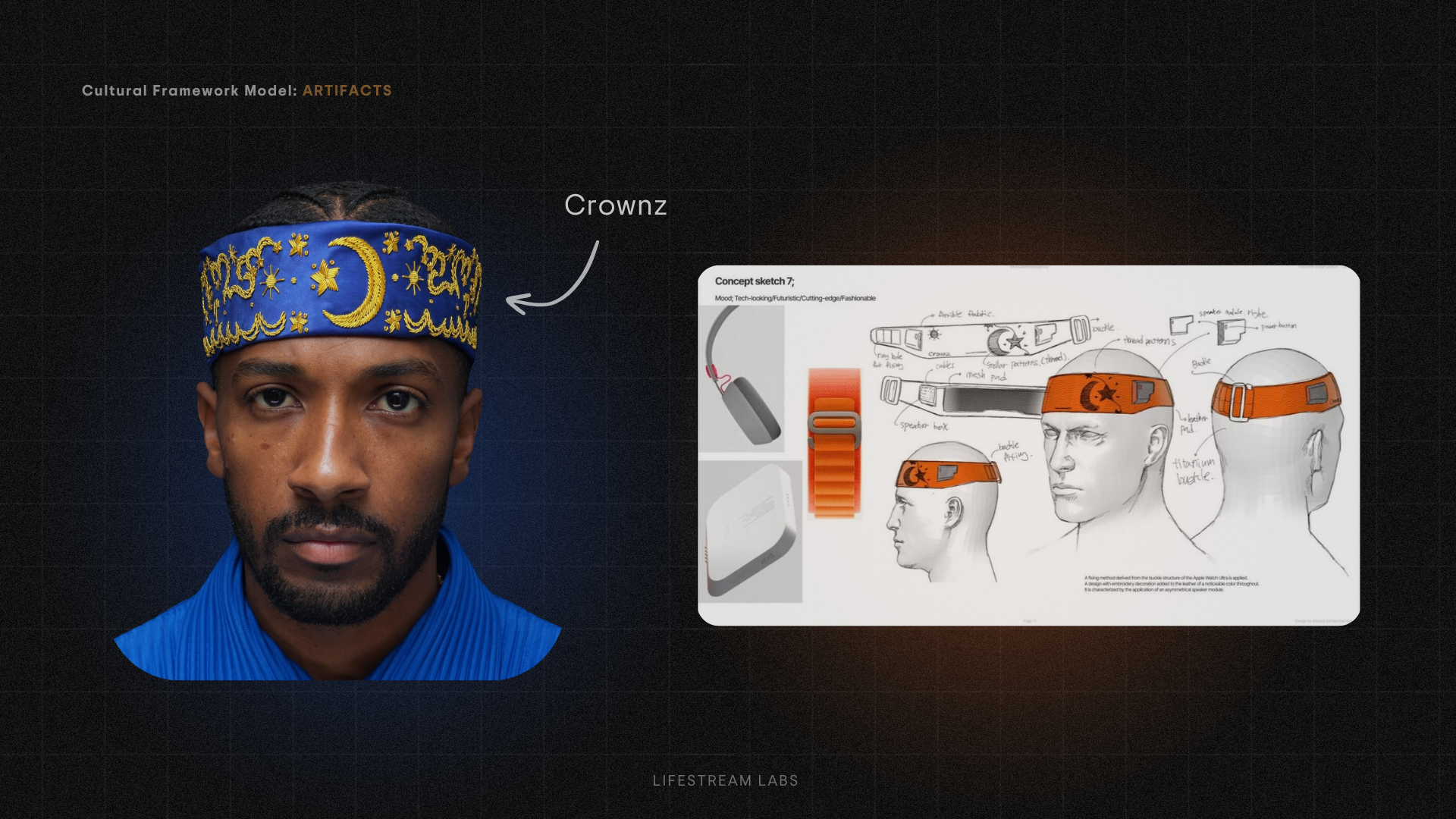
Visible in every public and digital appearance he makes, 19Keys has effectively tied this Artifact to the culture he’s spent years crafting around his personal brand.
Being seen wearing a “Crownz” immediately let’s people know that you’re tuned into 19Keys’ culture and brand.
Application
Identify an item that is attainable and tasteful that people can rally around and represent.
Even digital items like NFTs have proven to be quite effective as Artifacts that signal cultural membership.
Once you’ve determine what your Artifact(s) will be, you can take it a step further by connecting it to a habitual Practice and showing it throughout the Exposure your culture consumes.
Protagonists
Powerful cultures are invariably linked to a myriad of captivating stories.
In fact, the best cultures are still an unfolding story themselves where subscribers can join in as a key character.
The Protagonists element has two perspectives to consider.
On one hand, the Protagonists are the human embodiments of what a culture consists of and is influenced by.
Protagonists have the power to move and instigate change within a culture.
In hip hop, Protagonists include people like Tupac, Biggie, Kanye West, Drake, Eminem, all having the cultural prowess to influence.
In the Renaissance period, Leonardo Da Vinci was a pivotal Protagonist in the cultural shift the time was marked by.

From another perspective, Protagonists also refer to the actual subscribers of a particular culture.
It’s important that you create ways for supporters to feel like integral parts of the cultural story that you are building.
Application
As a business or brand builder, you become the first Protagonist.
But it’s important that you begin to build your “Circle of Protagonists” that will become your business partners and collaborators.
For those who choose to adopt the culture you’re building, make sure there is ample room for them to play the role of Protagonist from time to time by providing opportunities for them to contribute ideas, evolution, and opinions.
Aesthetics
The Aesthetics element of cultures is made up of the artistic and design tastes of a culture.
Typically, this element is demonstrated by proxy through all the other elements.
A culture’s aesthetics can be seen in its clothing & product design [Artifacts], visual media [Exposure], and beauty standards [Protagonists].
However, it’s most obviously seen in its art and architecture.
Consider how decidedly different most hip hop album covers are from heavy metal album covers.
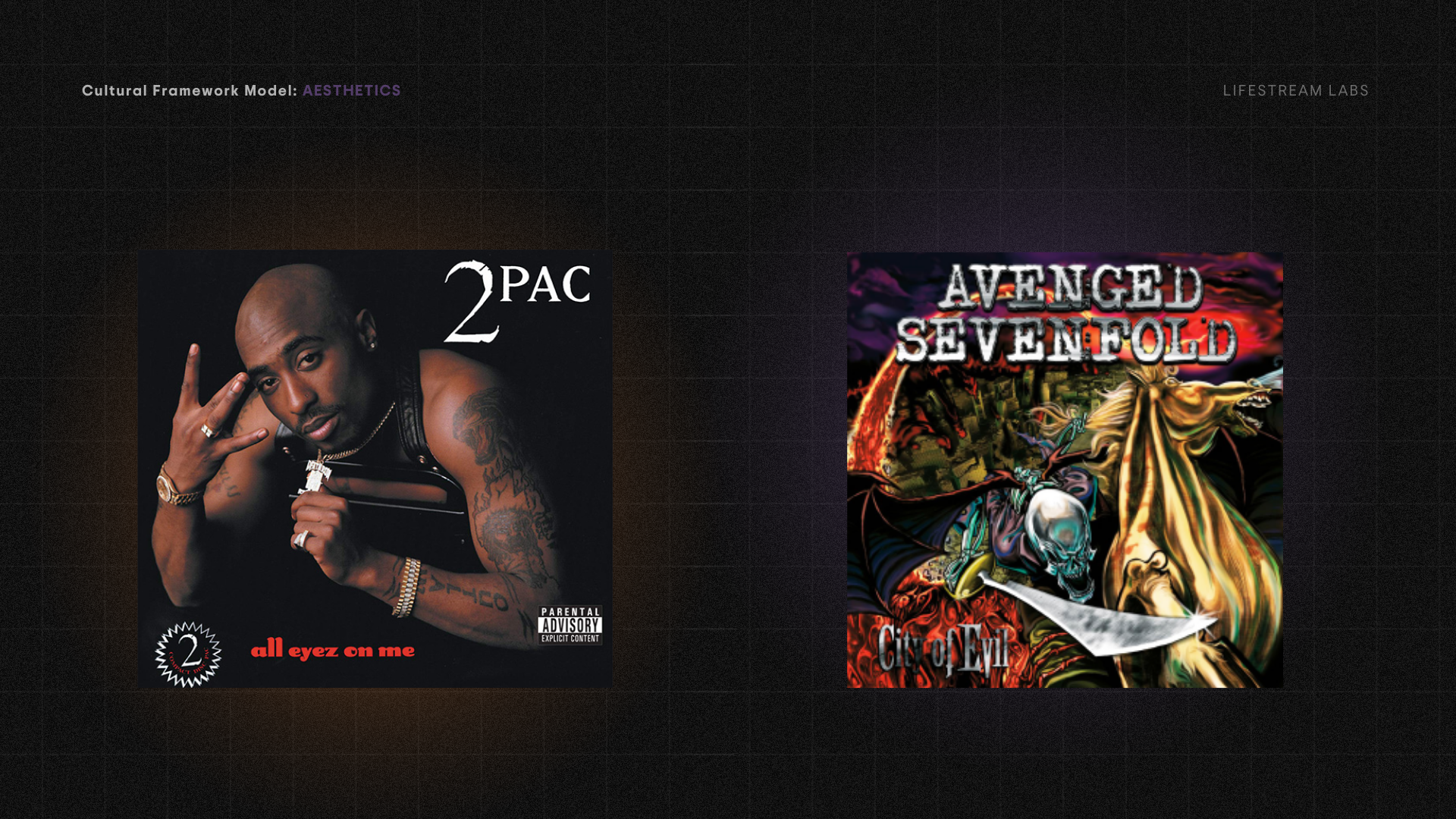
Or the dramatic contrast between modern Japanese interior design and Victorian era design (a style which I have despised since I became self aware as a child)
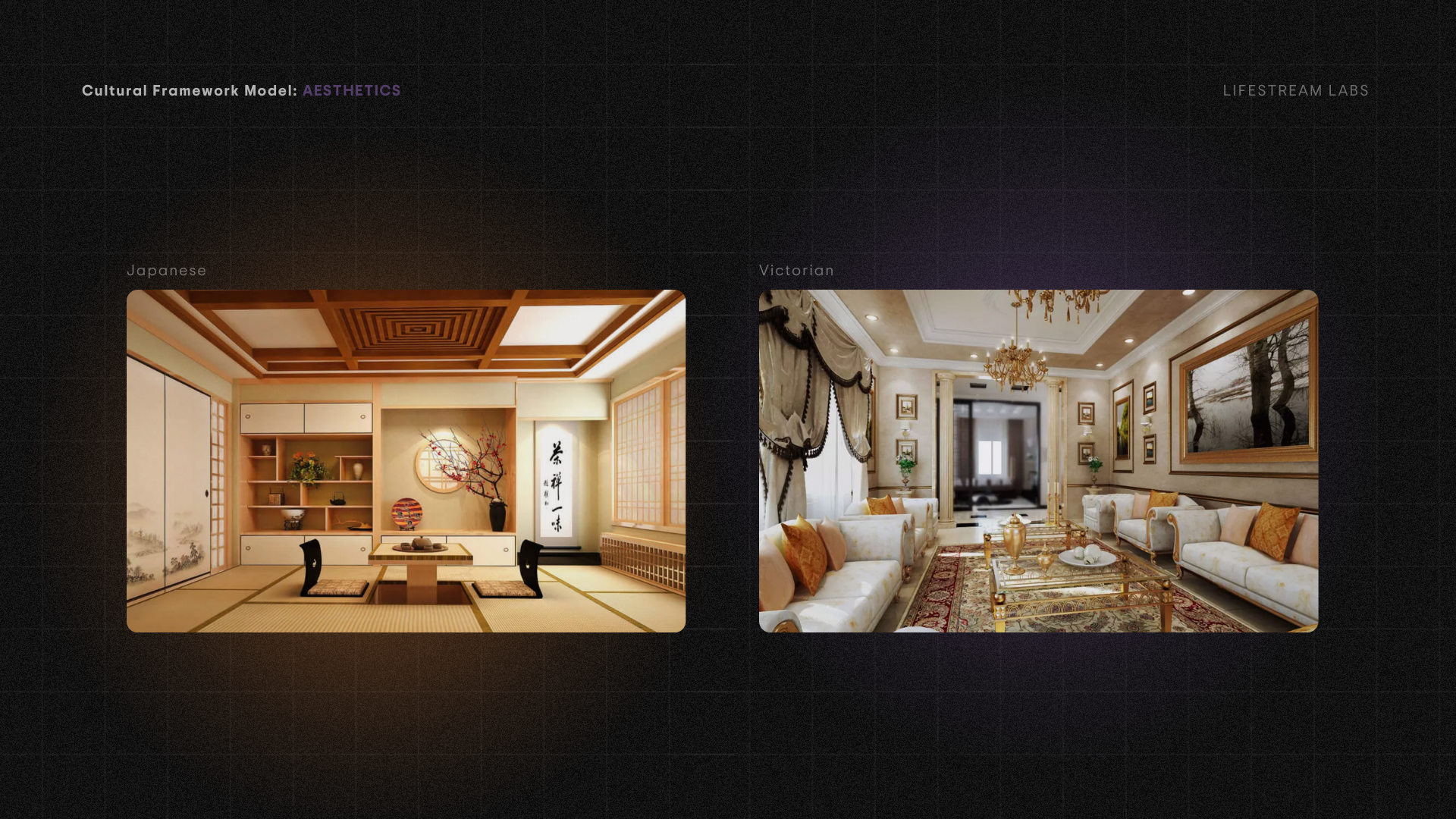
Application
Developing a clear Aesthetic for your culture is mostly a matter of creative exploration and refinement.
If you’re not confident in your ability to create a consistent and well-designed Aesthetic for your culture, you may want to consider hiring an artist to help you with the process.
Conflict
One of the most neglected elements of building a culture around a brand or business is conflict.
Conflict, also called Drama, is choosing an enemy that your culture is at odds with.
Conflict is what creates tension in a story.
Tension is what creates intrigue for an audience.
How boring would it be if the Avengers had no conflict or enemies?
Application
As you craft your culture, be careful to choose an enemy to be in eternal conflict with.
It doesn’t have to be a person or group of people.
It’s more often an idea, concept, or social norm.
Part of Iman Gadzhi’s massive success at such a young age is because he’s been abundantly clear about the enemy he’s trying to tear down: the traditional education system.
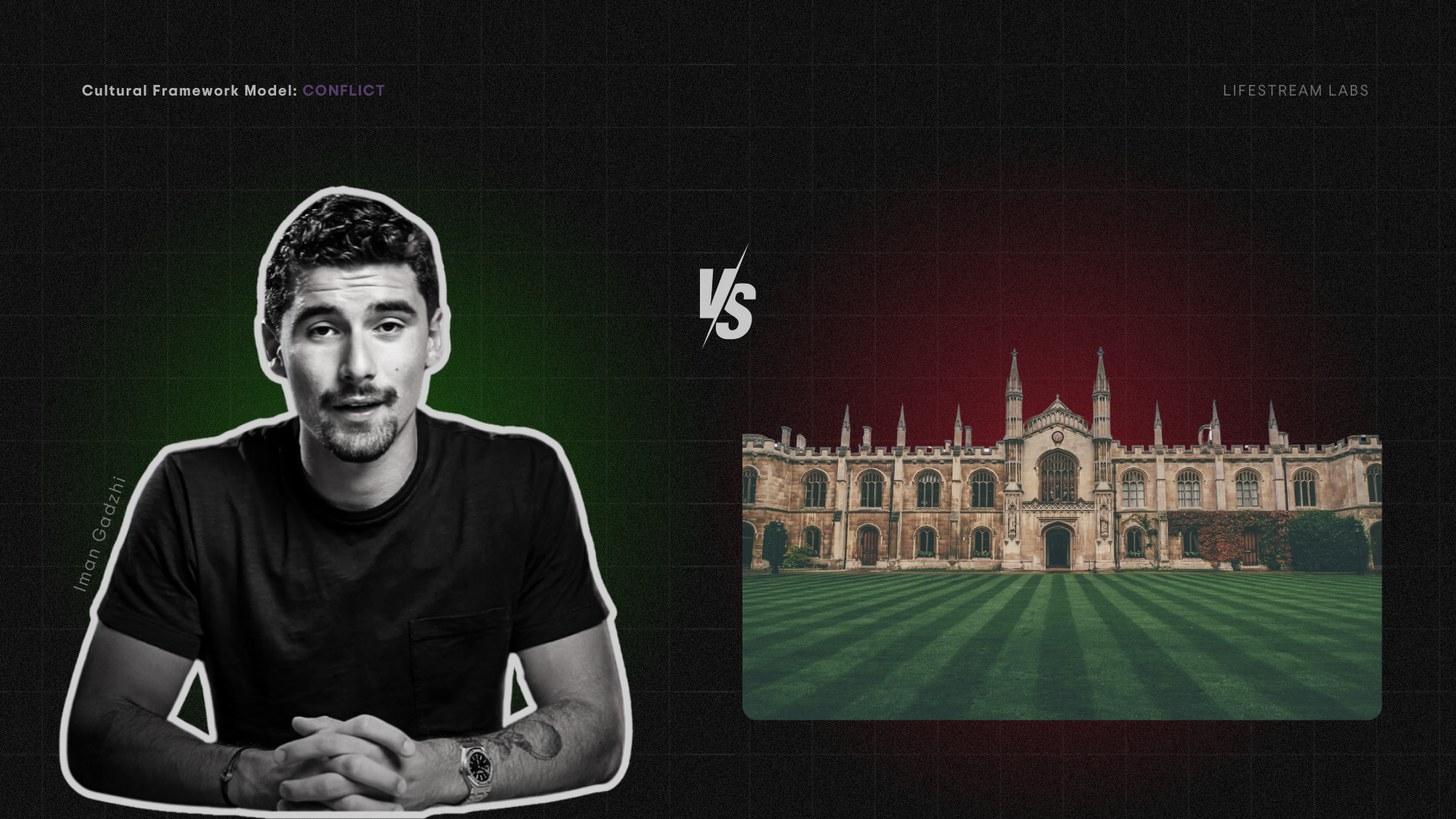
Choose an enemy for your people to rally against.
👏 The End
Thanks for reading!
This was a big one.
I spent months studying, reverse engineering, and restructuring this framework to get it to a point of being useful when applied to business and brand building.
In fact, it was almost exactly a year ago that I sketched out the first iteration of this framework.
If you found this valuable, send it to 2 of your friends who might get something out of it as well!
Thank you!
P.S. If you'd like a more detailed breakdown of exactly how to implement this system in your own brand/business, I put together a 45 minute video training doing exactly that: https://contrarian-marketing.com/cultsystem





